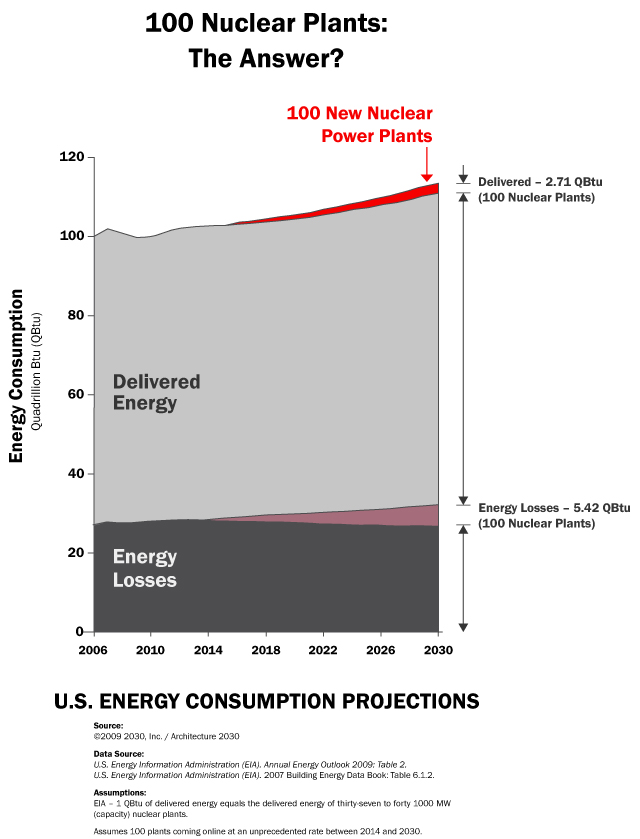I was wondering when it would happen: a building sector disinformation campaign launched by vested interests.
 Well it's here. The campaign hit the New York Times on Saturday, and it comes from NAIOP, the Commercial Real Estate Development Association. It appears just as the country has come to grips with the fact that buildings are responsible for over 50% (50.1% to be exact*) of all the energy consumed in the U.S. It comes at a time when Americans are trying to reshape their energy policy and wean themselves from dependence on foreign oil, dwindling natural gas reserves, and dirty conventional coal.
Well it's here. The campaign hit the New York Times on Saturday, and it comes from NAIOP, the Commercial Real Estate Development Association. It appears just as the country has come to grips with the fact that buildings are responsible for over 50% (50.1% to be exact*) of all the energy consumed in the U.S. It comes at a time when Americans are trying to reshape their energy policy and wean themselves from dependence on foreign oil, dwindling natural gas reserves, and dirty conventional coal.
This disinformation campaign is obviously meant to stall, confuse, and distort. The first salvo, a spurious study (PDF) and press release, was issued two days before the Senate Energy and Natural Resources Committee held a hearing on improving building energy code standards.
It is clear from a simple analysis of the study that NAIOP commissioned a building energy efficiency analysis to support predetermined results. They contracted with ConSol, an energy modeling firm, and asked them to analyze five (yes, only five) efficiency measures for an imaginary square-shaped, four-story office building with completely sealed windows and an equal amount of un-shaded glass on all four sides of the building.
In other words, analyze an energy hog.
They conducted the analysis for different cities and climates -- Newport Beach, Chicago, and Baltimore -- without changing the design to respond to these very different climates. They did not study changing the shape of the building, its orientation or form, or redistributing windows or using different windows to take advantage of natural light for daylighting or sunlight for heating. (Office buildings are day-use facilities.) They did not study shading the glass in summertime to reduce the need for air-conditioning, using operable windows for ventilation (not even in Newport Beach with its beautiful year-round climate), using landscaping to reduce micro-climatic impacts, employing cost-effective solar hot water heating systems, employing an energy management control system, or even study the impact of using inexpensive energy saving occupancy sensors in rooms to turn off lights.
In other words, NAIOP intentionally kept out of the analysis all the readily available low-cost, no-cost, and cost-saving options to reduce a building's energy consumption. This deliberate omission is glaringly apparent in their press release and in the NYT article. In fact, they take so many inexpensive energy-saving options off the table that it is impossible for the imaginary building to reach commonly achievable energy-consumption-reduction targets. They then add an inflammatory headline to their press release -- "Results show efficiencies unable to reach 30 percent mandates" -- and state that, "The study provides an unbiased insight into the energy targets practical to commercial development today."
Using this pseudo-analysis as their baseline, NAIOP goes on to report, without any objective basis, that "reaching a 30 percent reduction above the ASHRAE standard (a commercial building energy code standard) is not feasible using common design approaches and would exceed a 10-year payback." They conclude, "achieving a 50 percent reduction above the standard is not currently reachable."
Clearly, this study is meant to confuse the public and stall meaningful legislation, insuring that America remains dependent on foreign oil, natural gas, and dirty conventional coal.
The U.S. peaked in oil production in 1970 and natural gas in 1973. Our reserves are in steep decline and 70 percent of the remaining world oil and gas reserves are located in the Middle East, an area stretching from Saudi Arabia and Iran to the Islamic republics of the former Soviet Union. This type of activity by NAIOP not only hurts our country, it is also a disservice to their membership and all those in the building sector who work hard to deliver a high-quality, energy-efficient building products.
NAIOP touts itself as advancing responsible commercial real estate development and advocating for effective public policy. This pseudo-study and misleading campaign accomplishes none of these goals.
The American public deserves better.
-----
* To create a U.S. Building Sector, the Residential buildings (operations) sector, Commercial buildings (operations) sector, Industrial sector-building operations estimate, and the Industrial sector-annual building construction and materials embodied energy estimate were combined.




